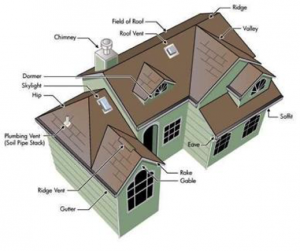Inspect your roof annually to assess the health of your home.
Performing regular maintenance can help extend the life of your roof, but the untrained eye cannot identify every problem.In fact, most roofing contractors recommend a comprehensive roof inspection and regular maintenance by a trained professional.
Why roof inspections matter
Experienced roofing professionals are trained to do a complete assessment of your entire roofing system from roof vent to downspout. Some roofing companies offer free inspections, especially after a major storm. However, some roofers can charge $200 or more to inspect your roof. The cost to inspect a roof depends on its size, pitch, type of material and may include some minor roof repairs. Lyons Roofing recommends getting a roof inspection at least annually.
Wind and hail storms that can damage your roof happen more frequently than people think.
For the DIY Homeowner:
Areas to check during a roof inspection
Homeowners who take proper precautions to prevent falls and know what to look for can do their own roof inspection. If you’re game to try, here’s what you should do.
- Buy a fall protection equipment kit, sold at most home improvement stores. Any good roof inspection requires getting on the roof, you’ll feel more secure walking around and making repairs when you are firmly attached to the structure. A fall protection kit will include a roof anchor, safety harness, rope and lanyard. In most cases a kit will contain all of the safety gear you will need to work and move freely on a roof.
- Check the integrity of the shingles, all flashing around roof pipes, chimneys and vents. Look for missing material or gaps that allow water to get below the shingles or between seams.
- Examine the soundness the draining system, which includes gutters and downspouts. They should be attached properly, sloping at a right angle and free of debris.
- Walk the roof area and check the condition and age of the roofing materials. Look for missing, broken or warn shingles with missing granules. Check for soft spots in the roof surface as you walk on it. Soft spots signal rotting wood beneath your shingles.
- Do an interior inspection. Go to the top floor of your home and look for leaks or water stains on the ceiling. Go to the attic and look for wet spots and rotting wood under the roof’s surface.
- Examine the soffit for any holes, cracks and damage that may be caused by animals or wear and tear.
- Look for any signs of rotting wood on the fascia. Rotting fascia won’t provide the support your gutters need.
If you feel unsafe at any time, trust your judgment and call a local roofing contractor to complete your roof inspection.
During your roof inspection you are bound to run into something you may not understand or know for sure if it is normal wear or something to be of more concern. In this case reach out to your local roofing contractor for a further inspection.
Additionally, you can email pictures and a description of your concern to Lyons Roofing and we will be more than happy to answer any questions to the best of our ability remotely.

Leave a Reply